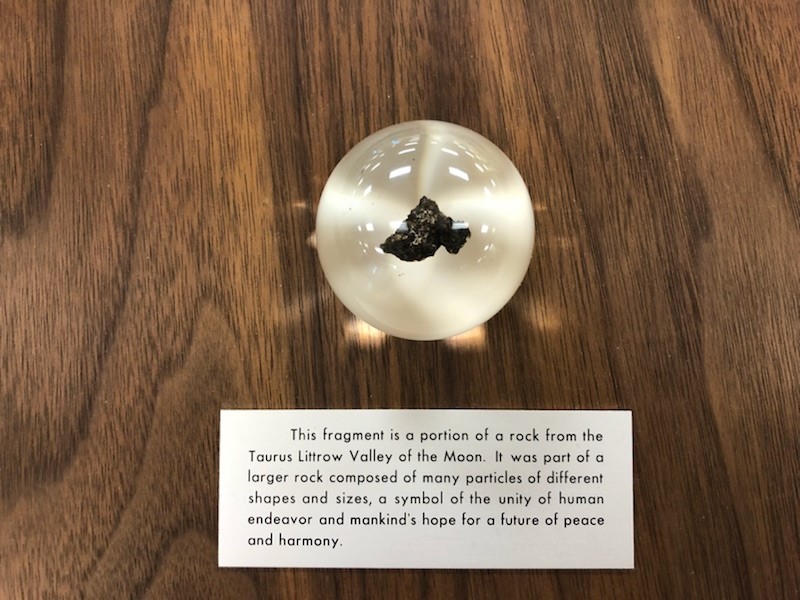Spencer Research Library: Home of Kansas’s Apollo 17 Moon Rock
We have previously highlighted the oldest man-made item in Spencer’s collections: a cuneiform tablet that is more than 4,000 years old. You can visit the library and see the tablet on display in the library’s North Gallery exhibit.
But, did you know that there is one item in Spencer’s holdings that is even older than the cuneiform tablet? It’s a moon rock that is approximately 3.7 billion years old!
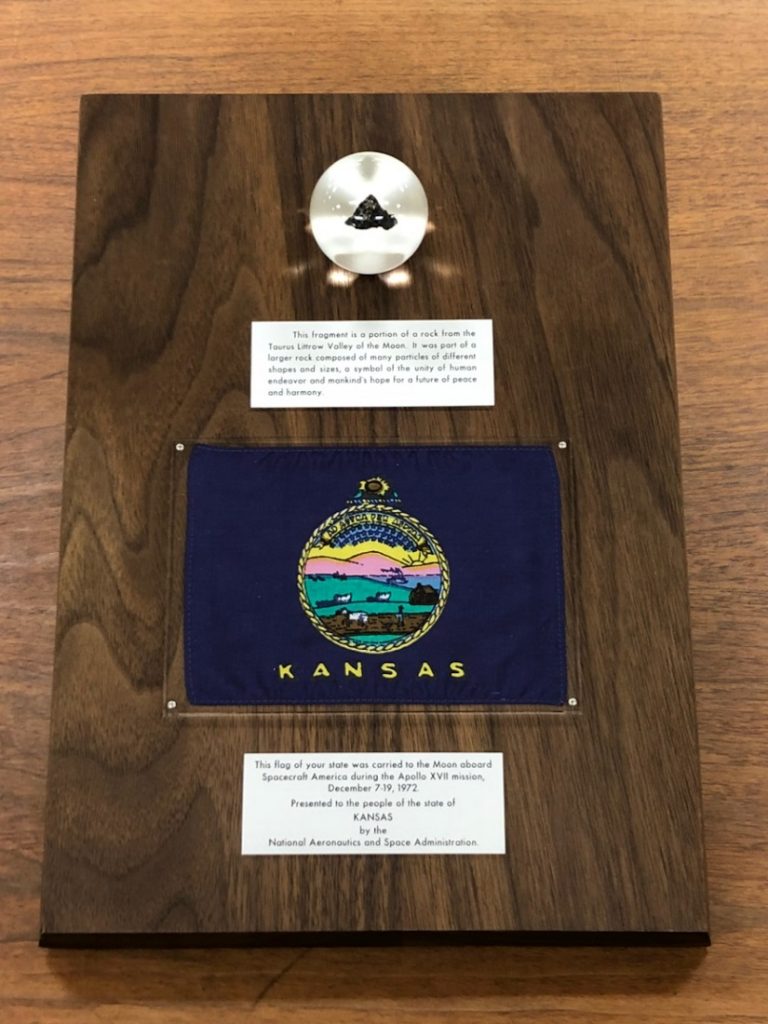
The rock was gathered during the December 1972 Apollo 17 mission, the last human expedition to the Moon. According to information from the Smithsonian National Air and Space Museum,
[Apollo 17] carried the only trained geologist to walk on the lunar surface, lunar module pilot Harrison Schmitt. Compared to previous Apollo missions, Apollo 17 astronauts traversed the greatest distance using the Lunar Roving Vehicle and returned the greatest amount of rock and soil samples. Eugene Cernan, commander of Apollo 17, still holds the distinction of being the last man to walk on the Moon, as no humans have visited the Moon since December 14, 1972.
Specifically, according to a NASA description of the mission, the Apollo 17 astronauts “deployed or conducted ten science experiments, including the Apollo Lunar Surface Experiments Package (ALSEP) suite of instruments, took more than 2,000 photographs and collected about 243 pounds (110 kilograms) of soil and rock samples at twenty-two different sites.”
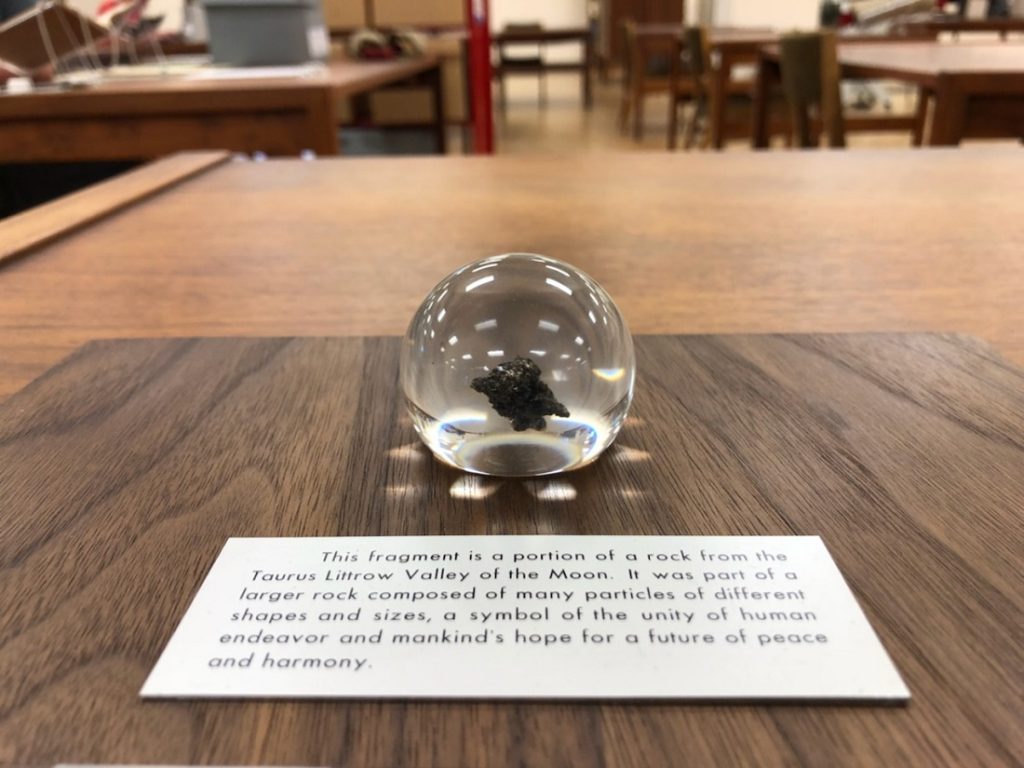
The moon rock now housed at Spencer was part of a larger sample gathered at the end of the third and final Extravehicular Activity (EVA) moonwalk on December 13-14, 1972. Here is what astronaut Eugene A. Cernan said as he collected the sample in the Taurus Littrow Valley. (The section below is excerpted from a transcription of the EVA-3 closeout at the archived Apollo 17 Lunar Surface Journal website. You can also watch footage of the sample being collected by clicking on the 169.41.46 video clip link; the section quoted below starts about a minute and a half into the footage.)
I think probably one of the most significant things we can think about when we think about Apollo is that it has opened for us – “for us” being the world – a challenge of the future. The door is now cracked, but the promise of the future lies in the young people, not just in America, but the young people all over the world learning to live and learning to work together. In order to remind all the people of the world in so many countries throughout the world that this is what we all are striving for in the future, Jack has picked up a very significant rock, typical of what we have here in the valley of Taurus-Littrow.
It’s a rock composed of many fragments, of many sizes, and many shapes, probably from all parts of the Moon, perhaps billions of years old. But fragments of all sizes and shapes – and even colors – that have grown together to become a cohesive rock, outlasting the nature of space, sort of living together in a very coherent, very peaceful manner. When we return this rock or some of the others like it to Houston, we’d like to share a piece of this rock with so many of the countries throughout the world. We hope that this will be a symbol of what our feelings are, what the feelings of the Apollo Program are, and a symbol of mankind: that we can live in peace and harmony in the future.
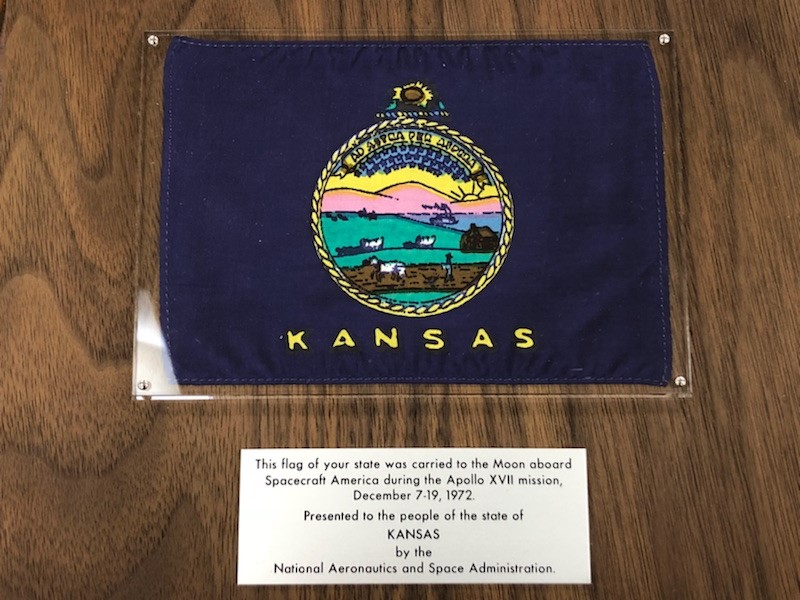
An article on the website Collect Space describes what happened to the larger moon rock when it arrived on Earth.
Three months after Apollo 17 returned home in December 1972, then-U.S. President Richard Nixon ordered the distribution of fragments from the rock that Cernan and Schmitt collected, since labeled sample 70017, to 135 foreign heads of state, the fifty U.S. states and its provinces. Each rock, encased in an acrylic button, was mounted to a plaque with the intended recipient’s flag, also flown to the Moon.
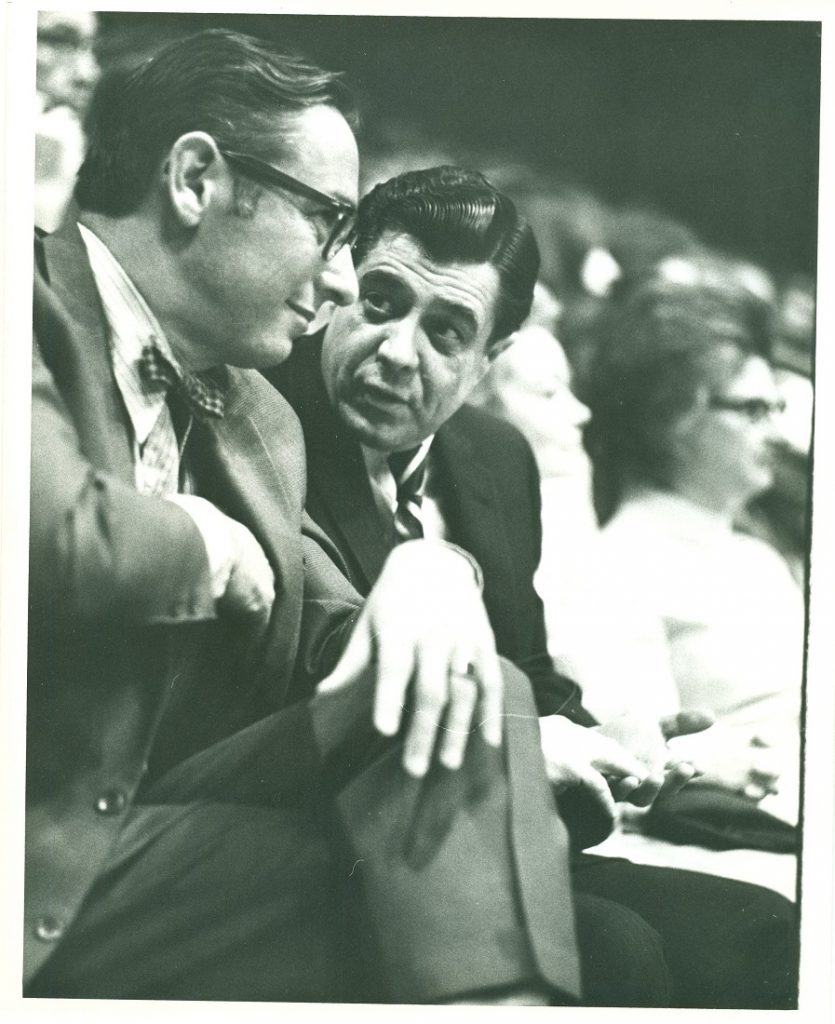
Kansas’s Apollo 17 moon rock is housed at Spencer as part of Robert Blackwell Docking’s papers. Docking was the governor of Kansas at the time of the Apollo 17 mission (1967-1974); he donated his papers to Spencer in 1975.
A similar lunar sample display was presented to each state after the 1969 Apollo 11 mission, the first manned mission to land on the Moon. You can see Kansas’s Apollo 11 moon rock on display at the Kansas Museum of History.
Caitlin Donnelly
Head of Public Services
Tags: Apollo 17, Artifacts, Caitlin Donnelly, Kansas Collection, Kansas moon rock

